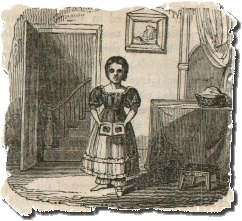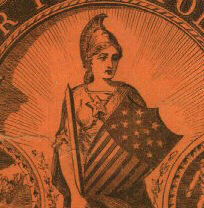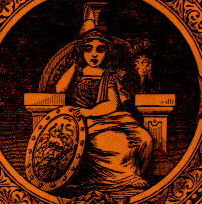NINETEENTH-CENTURY AMERICAN CHILDREN & WHAT THEY READ:
Some of Their Magazines
About 430 periodicals for children were founded in the U. S. before 1873. Learn more about them at “American Children’s Periodicals, 1789-1872,” an ever-growing descriptive bibliography.
Works on pre-1873 American children’s periodicals are listed or transcribed in a separate bibliography.
Puzzles appeared in most nineteenth-century American magazines for children. The Puzzle Drawer is a selection of puzzles printed in Woodworth’s Youth’s Cabinet and Robert Merry’s Museum. They range from the easy to one designed to be impossible. Try your wits! (And your patience!)
Intended to include only the best writing and illustrating for children, Our Young Folks lived up to its vow during its brief life. It was edited by Lucy Larcom, John Townsend Trowbridge, and—early—by Abigail Dodge (“Gail Hamilton”) and featured many works, such as “The Peterkin Papers,” by Lucretia Hale, which became classics. The magazine also featured the work of Winslow Homer and Mary Ann Hallock.
INDEX: I’ve indexed years 1865-1872 by author and by title. The author index identifies most of the authors who wrote under pseudonyms, and includes the creators of the many engravings included in the issues. The title index is in one extra-large file.
The Youth’s Companion, in 1865, advertised its coming rival.
“The Volunteer’s Thanksgiving” (January 1865), by Lucy Larcom, weaves patriotism through a description of a stereotypical New England Thanksgiving.
“The Color-Bearer” (January 1865), by John Townsend Trowbridge, extolls the courage of a young color-bearer during a furious Civil War battle—and in life.
“The City Girl” (March 1865), by “Gail Hamilton” (Abigail Dodge), contrasts city and country children and offers advice on establishing a friendship.
“Among the Studios, no. 3” (July 1866), by T. B. Aldrich, is a wandering discussion of Winslow Homer’s studio and his early career and includes an illustration of his Civil War picture, “The Bright Side.”
“The Veteran Eagle” (October 1866), by Maria S. Cummins, discusses “Old Abe,” the bald eagle mascot of a Wisconsin regiment. The article was corrected two months later in The Little Corporal.
“Swinging on a Birch-Tree” (June 1867), by Lucy Larcom, is a poem describing a popular game, accompanied by an engraving by Winslow Homer.
“Bird-Catching” (August 1867), by R. H. Stoddard, is a poem about some hunters relaxed about their quarry, with “The Bird-Catchers,” by Winslow Homer.
“Watching the Crows” (June 1868), by John Townsend Trowbridge, is a poem about the constant battle between farmer and crow, with an engraving by Winslow Homer.
“Strawberries” (July 1868), by John Townsend Trowbridge, is a conversation between child and berry; it accompanies “The Strawberry Bed,” by Winslow Homer.
“Green Apples” (August 1868), by John Townsend Trowbridge, is a cautionary poem about gathering things too early, with an engraving by Winslow Homer.
“Sissy’s Ride in the Moon” (November 1869), by Annette Bishop, features a child’s dream of bringing her sister back from death—with which many children of the period probably could have sympathized. The accompanying engraving, by Mary Ann Hallock, was her first for Our Young Folks.
This Review of John Greenleaf Whittier’s Illustrated Ballads of New England (November 1869) includes a sample engraving, “The Playmates,” by Winslow Homer.
“Hunting Eggs” (January 1870) was one of five large engravings with which editors began the year. This work by Mary Ann Hallock illustrated no particular piece, but the editor rhapsodized about it in an editorial.
“Spring Whistles” (May 1870), by Lucy Larcom, explores the promise inherent in the unknown, as three boys anticipate the effect of their new whistles. The engraving by Mary Ann Hallock was perhaps the finest she did for Our Young Folks.
“At Grandma’s Bedside” (May 1870), by Edgar Fawcett, is a poem about old age and the approach of death, with an engraving by Mary Ann Hallock.
“Knitting-Work” (March 1872), by Genie M. Wilde, waxes philosophical about knitting.
Founded at the end of the Civil War, The Little Corporal featured a military metaphor and a mascot dressed in a Zouave’s uniform. It devoted itself to “fighting against wrong, and for the good, the true, and the beautiful.” Not especially famous for the quality of its stories or illustrations, the Corporal offered readers pieces emphasizing morality, and a certain coziness.
“The Children’s Portrait of Mr. Lincoln” (1865) was engraved from a daguerreotype created by Matthew Brady, to serve as a premium to subscribers to The Little Corporal. Advertisements for the premium were supplemented by mention in editorial text. At least one subscriber framed her premium.
“The Army of the American Eagle” (July 1865) describes Alfred Sewell’s use of “Old Abe,” the bald eagle mascot of a Wisconsin regiment, to make money for the Northwest Sanitary Fair.
“Willie Lincoln” (July 1865), by Emily J. Bugbee, celebrated the recently assassinated President and his relationship with his oldest son.
“How Engravings are Made” (August 1866) gives readers insight into how the magazine’s illustrations were created and explains why a premium was late.
“The Veteran Eagle: A Correction” (November 1866), by Alfred Sewell, responds to errors in an article on “Old Abe” which had appeared a month earlier in Our Young Folks.
“The Veteran Eagle; and What the Children Did” (December 1866), by Alfred Sewell, describes his charity work using “Old Abe,” the bald eagle mascot of a Union regiment, and lists the children who earned the largest amounts of money for charity.
“How to Go to School” (December 1866), by H. E. B., offers advice in monosyllables to very new scholars.
In 1867, the Corporal printed wood engravings of the popular Rogers groups, apparently because it was difficult to find suitable illustrations for the magazine.
“To All Who Are Interested” (May 1867) instructs would-be writers on how to write for the Corporal.
The magazine had its own fight—against the devastation wrought by the Chicago Fire in October 1871, which burned the Corporal’s offices. A special issue in November 1871 assured readers that the magazine would still be published; more pieces on the Fire were scattered through later issues.
Letters from subscribers offered sympathy—and reminders of the horrific fires other Midwestern towns suffered on October 8.
“Routed But Not Conquered” (December 1871) reminds readers of the magazine’s financial losses and re-assured readers that the Corporal would fight on.
Thomas Nast sent an illustration celebrating the Corporal’s vow to rise from the ashes of the Chicago Fire; it appeared as the frontispiece for the December 1871 issue.
“More About the Fire” (December 1871) describes the aftermath, as thousands were desperate for basic necessities.
One of the popular features of the Corporal’s puzzles column was its “picture stories”: a series of illustrations for which readers were invited to write a narrative. “A Picture Story of the Chicago Fire” (January 1872) was the first to appear after the calamity.
“ ‘Relics of the Fire’ ” (March 1872) takes an amused view of the “new trade” which sprang up a week after the Fire.
“The Year After the Fire” (November 1872), by J. B. T. Marsh, revisits the events of October 1871 and marvels at Chicago’s triumph over calamity.
“What Does Johnny Read?” (January 1872) warns readers of the Corporal that a big reader isn’t necessarily a good reader, in a piece aimed at the parents of boys.
Intended for children of the Society of Friends, The Children’s Friend not only followed Quaker morality, but educated readers about the world around them.
“The Mammoth” (Twelfth month 1871)—reprinted from The Young Folks’ News—shows a surprisingly peaceful mammoth thawing from ice in front of an astonished Evenki hunter; it’s one of a number of works on fossils appearing in early American children’s periodicals.
“The Ancient World,” by “Uncle Jacob” (Fourth month 1872) shows young readers a Peaceable Kingdom of iguanodons, pterosaurs, ichyosaurs, labyrinthodons, teleosaurs, and other citizens of the dinosaur world (and all without using the word “dinosaur”), in one of the works on fossils appearing in early American children’s periodicals.
To “Nineteenth-Century American Children & What They Read”
Some of the children | Some of their books | Some of their magazines
Some works for adults, 1800-1872



